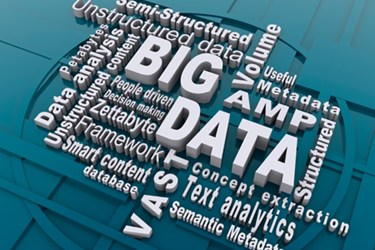How Real-Time Location Systems Revolutionized Healthcare
By Kayla Matthews, Productivity Bytes

Real-time location systems (RTLS) provide location-based information of people and items within a defined area. Users can typically log into dedicated interfaces to see location details as needed and adapt accordingly.
In a busy healthcare environment, a RTLS could aid in loss prevention, patient safety and more. Here are five ways the technology has spurred progress for patients and providers.
1. Increasing Bed Availability In Crowded Hospitals
During peak usage times at a healthcare facility — such as during the height of flu season — it's crucial that workers maximally utilize available beds. And one of the steps to doing that involves knowing precisely when patients get discharged so that housekeepers can come in and prepare beds for the next occupants.
Sharp Chula Vista Medical Center is a hospital in California with an emergency department that serves approximately 200 patients per day with 20 percent of those admitted. The patients there have wristbands that allow hospital workers to view their locations on a facility-wide map. Then, there are no unnecessary delays between the discharge of one patient and the admission of another in a given room.
Applying an RTLS system in this way allows facilities to get the most use of their facilities and avoid preventable backups.
2. Reducing Medical Equipment Repairs
Without the medical equipment used for patient diagnostics and care, hospitals would be unable to adequately meet the needs of patients and the people who provide care. When medical equipment breaks down, facilities have to invest in new machines or rent them to meet demand.
Sometimes, the inability to source equipment when needed causes severe disruptions to patient care. At Texas Health Presbyterian Dallas Hospital, that issue became so severe that nurses began hoarding equipment due to fear of not being able to otherwise get it when needed. The hospital regularly rented equipment as a way to compensate for the medical equipment that needed repairs, too.
However, the hospital re-evaluated the way it used an existing RTLS and made changes that achieved an 80-percent reduction in equipment repairs. In total, the facility saved $288,447 by eliminating costs previously associated with lost equipment or rentals. During the first year of implementing this new method of asset tracking, the hospital did not need to purchase or rent any equipment.
This is an example of how an RTLS can make hospitals more aware of the equipment they own. Then, they can use that equipment to benefit patients instead of having to rely on third-party resources, such as rental companies.
3. Cutting Down On Infection Risks
The increase in antibiotic resistance is one phenomenon that results in hospital workers needing to be especially careful with cleaning instruments between patients to avoid transmitting infections. At one hospital, poorly cleaned duodenoscopes caused the deaths of 11 patients. RTLS technology promotes patient and staff safety and could prevent fatalities like those.
For example, it can notify staff members of which rooms contain patients with known infections, allowing them to take the necessary precautions before entering. Also, an RTLS system can give alerts as medical equipment goes through each step of a required cleaning process. Then, there are no doubts that those items are ready for the next uses.
There are also soap and hand sanitizer dispensers that sync with hospital employee ID badges. They can monitor whether workers wash their hands before and after patient interactions and ensure they otherwise comply with a facility's infection control measures.
4. Monitoring Traffic Flows
A well-utilized RTLS can help medical facilities cut down on chaos and streamline traffic flows. That's because it can give metrics that detail the number of people currently residing in a section of the hospital, as well as the routes they used to travel there. When Parkland Health and Hospital System transitioned to a new campus, it depended on an RTLS to figure out the best ways to transfer patients.
The technology could locate people within six feet. Besides using RTLS, the hospital analyzed statistics to forecast the endurance levels of the people responsible for moving patients around the facility. Then, all that information helped the hospital advise on how members of the patient transport team could get between two destinations as efficiently as possible. Then, patients and staff members benefited.
5. Giving Workers Access To Urgent Assistance In Emergencies
Some RTLS platforms include a component that allows workers to immediately alert others to emergencies. For example, a nurse might be in the room of a psychiatric patient who suddenly becomes violent. Or, a provider could check a patient's vital signs when the person stops breathing. In cases like those, prompt action reduces adverse outcomes.
If hospitals invest in RTLS systems with panic button components, they could help workers feel safer when circumstances take unexpected turns. Plus, knowing that the technology exists could enhance peace of mind for patients. They'll realize that no matter what happens, anyone in the vicinity with a panic button can call for additional help when needed.
Helping Health Facilities Stay On Top Of Needs With Location Tracking
Medical complexes succeed when they demonstrate the ability to meet patient and provider needs. Failing to do that hinders patient outcomes and makes it difficult for employees to do their jobs.
Hospitals that consistently perform well should find they can compete in a changing marketplace and earn reputations as excellent places to get or give treatment. RTLS technology assists health facilities with the needs mentioned here and others.
About The Author
Kayla Matthews is a MedTech writer whose work has appeared on HIT Consultant, Medical Economics and HITECH Answers, among other industry publications. To read more from Kayla, please connect with her on LinkedIn, or visit her personal tech blog at https://productivitybytes.com.
